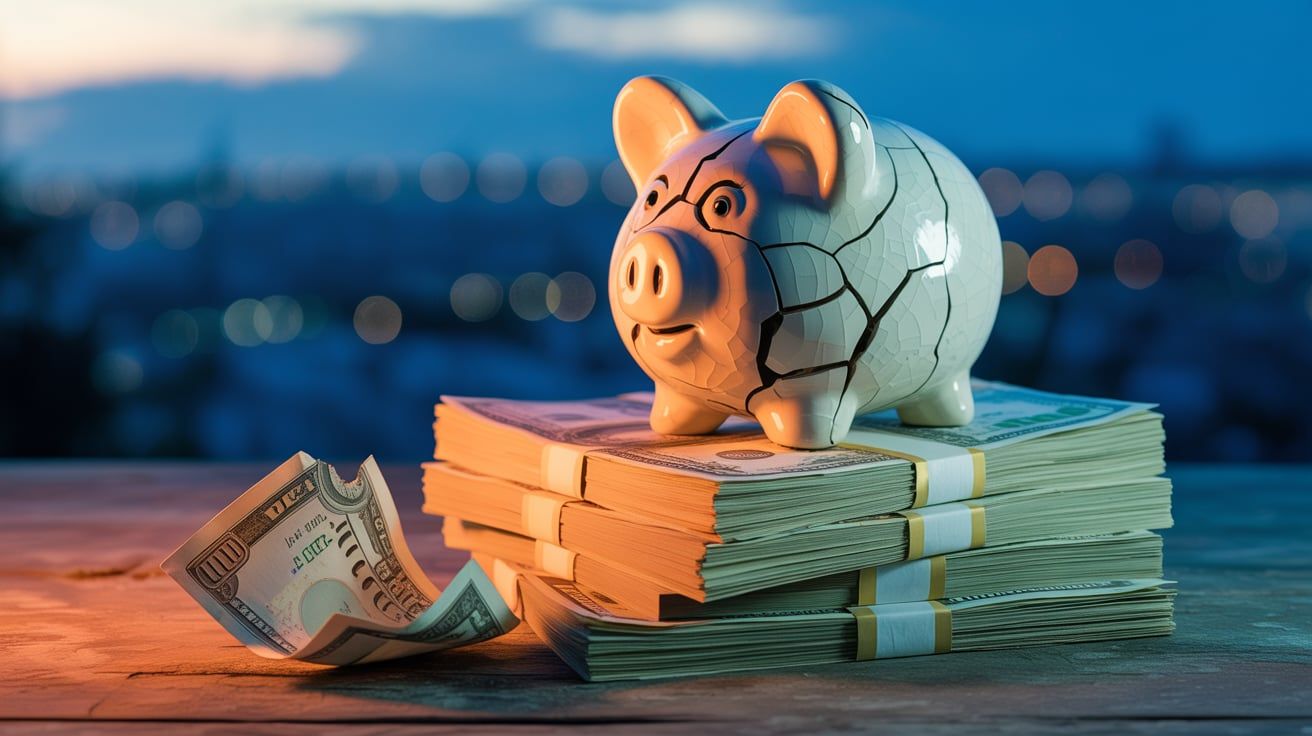The Credit Card Mistake That's Quietly Destroying Your Future
The Siren Song of Minimum Payments
Imagine this: you're staring at your credit card statement, a knot forming in your stomach. The balance is higher than you'd like, a stark reminder of that impulsive shopping spree or unexpected car repair. But then, a glimmer of hope – the minimum payment. It seems so manageable, so…easy. You breathe a sigh of relief, pay the minimum, and tell yourself you'll tackle the rest later. Sound familiar? This seemingly harmless act, paying only the minimum on your credit card, is the silent killer of financial futures for countless people.
We're not talking about a one-time slip-up. We're talking about a pattern, a habit that slowly but surely erodes your financial well-being. It's the financial equivalent of eating a single unhealthy snack every day – seemingly insignificant in the moment, but devastating over time. The allure of the minimum payment is strong, but understanding its true cost is crucial to taking control of your money and building a secure future.
The Avalanche of Interest
The real danger of minimum payments lies in the interest. Credit cards operate on a revolving credit system, meaning you're charged interest on any balance you carry over from month to month. When you only pay the minimum, the vast majority of your payment goes towards covering that interest, leaving very little to actually reduce the principal balance. This creates a vicious cycle where your debt barely shrinks, and you're essentially paying the credit card company for the privilege of owing them money.
Let's say you have a $5,000 balance on a credit card with an 18% APR (Annual Percentage Rate) and a minimum payment of around 2%. If you only make the minimum payment each month, it could take you decades to pay off that balance, and you'll end up paying thousands of dollars in interest. That's money that could be going towards your savings, investment, or other financial goals. It's a steep price to pay for the convenience of credit.
Opportunity Cost: What You're Really Losing
Beyond the sheer amount of interest you're paying, consider the opportunity cost. What else could you be doing with that money? Imagine taking the extra money you'd be spending on interest and investing it in a diversified portfolio. Over time, that investment could grow exponentially, providing you with a comfortable retirement, a down payment on a house, or the financial freedom to pursue your passions. By being trapped in the minimum payment cycle, you're sacrificing these opportunities.
Think of it this way: every dollar you spend on credit card interest is a dollar you can't invest in your future. It's a dollar that's actively working against your financial goals, rather than working for them. This is why understanding the true cost of credit card debt is so important. It's not just about the immediate financial burden; it's about the long-term impact on your ability to build wealth and achieve your dreams.
The Psychological Trap
The minimum payment also plays a psychological trick on us. It creates a false sense of security, making us believe we're managing our debt effectively when, in reality, we're barely treading water. This can lead to complacency and a reluctance to address the underlying issues that are contributing to our credit card debt in the first place. We become accustomed to the monthly payment, and it becomes a normalized part of our budget, even though it's a significant drain on our resources.
Breaking free from this psychological trap requires a conscious effort to challenge our assumptions and re-evaluate our relationship with credit cards. We need to recognize that the minimum payment is not a sustainable solution and that taking proactive steps to reduce our debt is essential for our long-term financial well-being. This might involve creating a budget, tracking our spending, and identifying areas where we can cut back to free up more money for debt repayment.
Budgeting Your Way Out
One of the most effective ways to break free from the minimum payment cycle is to create a budget. A budget allows you to track your income and expenses, identify areas where you can cut back, and allocate more money towards debt repayment. There are numerous budgeting apps and tools available online, or you can simply use a spreadsheet or even a notebook. The key is to find a method that works for you and that you can stick with consistently.
When creating your budget, be honest with yourself about your spending habits. Identify your needs versus your wants, and prioritize your expenses accordingly. Look for areas where you can make small changes that will add up over time. For example, you might consider eating out less often, canceling subscriptions you don't use, or finding cheaper alternatives for your everyday expenses. Every dollar you save can be put towards paying down your credit card debt.
The Debt Snowball vs. Debt Avalanche
Once you have a budget in place, you can start implementing a debt repayment strategy. Two popular methods are the debt snowball and the debt avalanche. The debt snowball involves paying off your smallest debt first, regardless of the interest rate. This provides a quick win and can help you stay motivated. The debt avalanche, on the other hand, involves paying off the debt with the highest interest rate first, which will save you the most money in the long run.
The best method for you will depend on your individual circumstances and preferences. If you're easily discouraged, the debt snowball might be a better option. If you're more focused on saving money, the debt avalanche might be the way to go. Regardless of which method you choose, the key is to be consistent and persistent. Every payment you make, no matter how small, is a step in the right direction.
Negotiating Lower Interest Rates
Another strategy to consider is negotiating a lower interest rate with your credit card company. This can significantly reduce the amount of interest you pay each month and accelerate your debt repayment. Call your credit card company and explain your situation. Let them know that you're committed to paying off your debt and that you're looking for ways to make it more manageable. They may be willing to lower your interest rate, especially if you have a good credit history.
If your credit card company is unwilling to lower your interest rate, you might consider transferring your balance to a card with a lower APR. Many credit cards offer introductory 0% APR periods for balance transfers. This can give you a temporary reprieve from interest charges and allow you to make significant progress on paying down your debt. Just be sure to read the fine print and understand the terms and conditions of the balance transfer before you apply.
Investing in Your Future, Not Your Debt
Ultimately, the key to avoiding the credit card trap is to prioritize your financial future. This means making conscious choices about how you spend your money and focusing on building wealth rather than accumulating debt. It means understanding the power of savings and investment and making them a regular part of your financial plan. It means recognizing that every dollar you spend on credit card interest is a dollar that could be working for you, not against you.
Take control of your finances today. Start by creating a budget, tracking your spending, and developing a debt repayment strategy. Negotiate lower interest rates, consider balance transfers, and explore other options for managing your debt. Most importantly, commit to making a change and prioritize your financial well-being. Your future self will thank you for it. The freedom that comes with financial security is worth the effort.
Conclusion: Break Free and Build Wealth
The minimum payment is a deceptive trap, a financial quicksand that can slowly but surely destroy your future. It's time to break free from its grasp and take control of your money. By understanding the true cost of credit card debt, creating a budget, implementing a debt repayment strategy, and prioritizing your financial future, you can escape the cycle of minimum payments and build a secure and prosperous future. Don't let credit card debt hold you back from achieving your dreams. Start today, and take the first step towards financial freedom.
The power to change your financial destiny is in your hands. Don't let another month go by paying only the minimum. Take action now. Review your credit card statements, calculate how much interest you're paying, and create a plan to pay off your debt as quickly as possible. Your future self will thank you for it. Start building your savings and investment today, and watch your wealth grow. The time to act is now. What are you waiting for?



